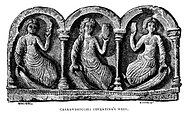
A pixie is a mythical creature of British folklore. Pixies are speculated to be particularly concentrated in the high moorland areas around Devon and Cornwall, suggesting some Celtic origin for the belief and name. However, the word 'pixie' also appears in Dorset, Somerset and to a lesser extent in Sussex, Wiltshire and Hampshire.

"Jack the Giant Killer" is a Cornish fairy tale and legend about a young adult who slays a number of bad giants during King Arthur's reign. The tale is characterised by violence, gore and blood-letting. Giants are prominent in Cornish folklore, Breton mythology and Welsh Bardic lore. Some parallels to elements and incidents in Norse mythology have been detected in the tale, and the trappings of Jack's last adventure with the Giant Galigantus suggest parallels with French and Breton fairy tales such as Bluebeard. Jack's belt is similar to the belt in "The Valiant Little Tailor", and his magical sword, shoes, cap, and cloak are similar to those owned by Tom Thumb or those found in Welsh and Norse mythology.
Fairies, particularly those of Irish, English, Scottish and Welsh folklore, have been classified in a variety of ways. Classifications – which most often come from scholarly analysis, and may not always accurately reflect local traditions – typically focus on behavior or physical characteristics.
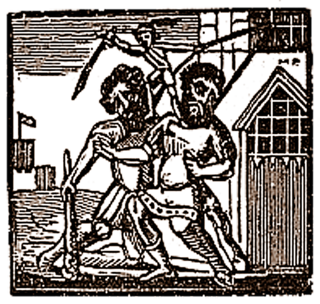
Blunderbore is a giant of Cornish and English folklore. A number of folk and fairy tales include a giant named Blunderbore, most notably "Jack the Giant Killer". The stories usually associate him with the area of Penwith.
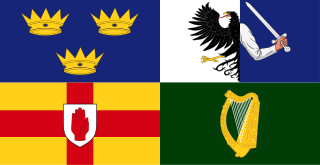
Irish folklore refers to the folktales, balladry, music, dance and mythology of Ireland. It is the study and appreciation of how people lived.

A spriggan is a legendary creature from Cornish folklore. Spriggans are particularly associated with West Penwith in Cornwall.

The culture of Cornwall forms part of the culture of the United Kingdom, but has distinct customs, traditions and peculiarities. Cornwall has many strong local traditions. After many years of decline, Cornish culture has undergone a strong revival, and many groups exist to promote Cornwall's culture and language today.

Sennen Cove is a small coastal village in the parish of Sennen in Cornwall, England, United Kingdom. According to the Penwith District Council, the population of this settlement was estimated at 180 persons in 2000. The South West Coast Path passes through Sennen Cove.
Morgens, morgans, or mari-morgans are Welsh and Breton water spirits that drown men.
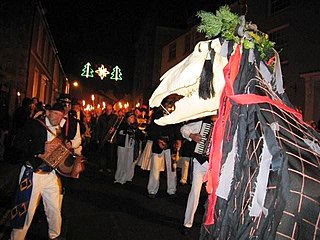
Guise dancing is a form of community mumming practiced during the twelve days of Christmastide, that is, between Christmas Day and Twelfth Night in West Cornwall, England, UK. Today, guise dancing has been appropriated for feast days at other times of the year.

Peter and the Piskies: Cornish Folk and Fairy Tales is a 1958 anthology of 34 fairy tales from Cornwall that have been collected and retold by Ruth Manning-Sanders and illustrated by Raymond Briggs. It was the first in a long series of such anthologies by Manning-Sanders.
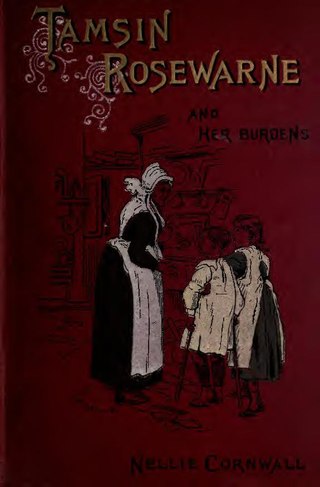
Nellie Sloggett was an author and folklorist who wrote under the names Enys Tregarthen and Nellie Cornwall.
Bucca is a male sea-spirit in Cornish folklore, a merman, that inhabited mines and coastal communities as a hobgoblin during storms. The mythological creature is a type of water spirit likely related to the Púca from Irish, the Pwca from Welsh folklore, and the female mari-morgans, a type of mermaid from Welsh and Breton mythology. Rev W. S. Lach-Szyrma, one 19th-century writer on Cornish antiquities, suggested the Bucca had originally been an ancient pagan deity of the sea such as Irish Nechtan or British Nodens, though his claims are mainly conjecture. Folklore however records votive food offerings made on the beach similar to those made to the subterranean Knockers and may represent some form of continuity with early or pre-Christian Brittonic belief practices.
William Henry Paynter (1901-1976) was a Cornish antiquary and folklorist who specialised in collecting witch-stories and folklore during the 1920s and 1930s - crucial years when witch beliefs were in decline in Cornwall. His folklore collecting preserved many stories of Cornish witchcraft and cunning folk that would otherwise have been lost.
The Montol Festival is an annual festival in Penzance, Cornwall, England, United Kingdom, which has been held on 21 December each year since 2007. The festival is a revival or reinterpretation of many of the traditional Cornish midwinter customs & Christmas traditions formerly practiced in and around the Penzance area and common to much of Cornwall at one point. The festival spans several days, but the main events are held on the traditional date of the feast of St Thomas the Apostle, usually 21 December, which always coincides with the winter solstice.

Cormoran is a giant associated with St. Michael's Mount in the folklore of Cornwall. Local tradition credits him with creating the island, in some versions with the aid of his wife Cormelian, and using it as a base to raid cattle from the mainland communities. Cormoran appears in the English fairy tale "Jack the Giant Killer" as the first giant slain by the hero, Jack, and in tales of "Tom the Tinkeard" as a giant too old to present a serious threat.
Betty Stogs was a Cornishwoman in a folktale. She lived on moorland near Towednack, Cornwall. She had a six-month-old baby but was lazy and dissipated. The whole town went looking for her child all through the night, but they came up with nothing. Betty was distraught and cried the whole night as she searched for her child. The neglected baby was cared for by the fairies, who returned it clean and laid upon a bed of moss. The tale is a traditional one of the area; a warning to mothers to look after their children properly, lest the pixies take them.

The Mermaid of Zennor is a popular Cornish folk tale that was first recorded by the Cornish folklorist William Bottrell in 1873. The legend has inspired works of poetry, literature and art.
William Bottrell (1816–1881) was born at Rafta, St Levan in Cornwall on 7 March 1816. He contributed greatly to the preservation of Cornish mythology. Both he and Thomas Quiller Couch contributed folk stories of West Cornwall for Robert Hunt's Popular Romances of the West of England, published in 1865.
